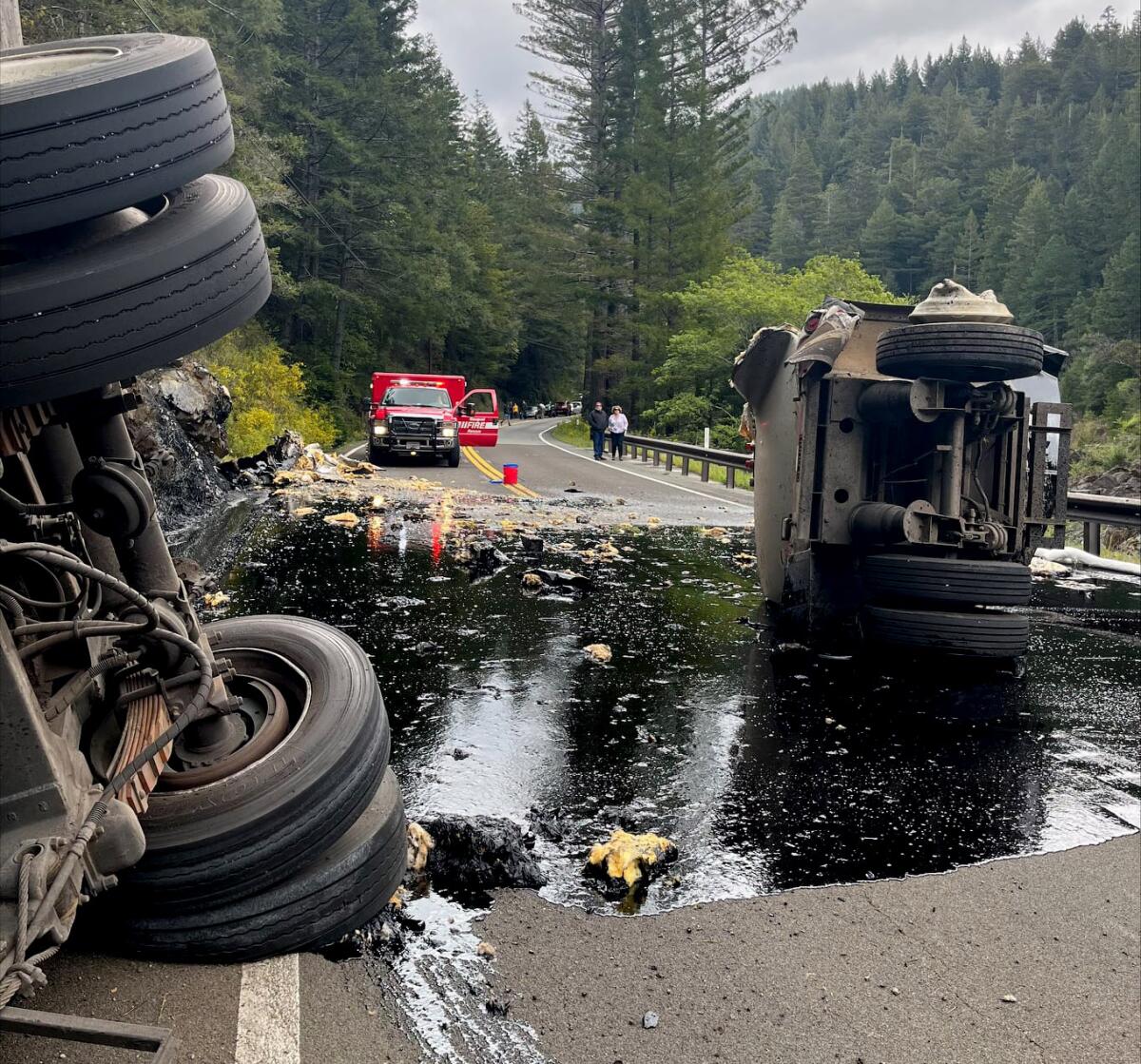‘Intensive cleanup’ underway after truck crash spills 2,000 gallons of asphalt binder in forest

- Share via
Forest officials said they are still concerned after nearly 2,000 gallons of “asphalt binder” spilled in a California forest when a semi-truck crashed on Highway 199.
Raoul Payette Jr., 58, was driving on the highway in Del Norte County on Thursday with a damaged tire, the California Highway Patrol said. Payette’s three-axle truck drifted and hit a power pole, knocking power lines onto the road. He continued driving for about one mile before the trailer detached, overturned and spilled “a significant amount” of hot asphalt binder around 10:40 a.m., near the Smith River National Recreation Area west of Gasquet and east of Middle Fork Gorge, CHP said.
A CHP officer pulled Payette over roughly 15 minutes later and arrested him on suspicion of driving under the influence and misdemeanor hit and run. The freeway was closed for several hours.
Later Thursday, Six Rivers National Forest officials said the asphalt binder had reached the Smith River. Asphalt binder resembles — but is not — tar. The binder is mixed into the gravel to create asphalt, said Betsy Totten, public affairs officer for Six Rivers National Forest.
“While the entrance of any foreign substance into a waterway can cause harm to habitat, this trailer was filled with hot asphalt binder,” U.S. Forest Service officials in Six Rivers National Forest said on Facebook. “Asphalt binder turns into a solid substance once the temperature of the binder reaches about 100-125 degrees — which means when the material hit the cold river it turned into a solid.”
Roughly 400 pounds of the substance hit the Smith River below and solidified, Totten said, adding that the solidification is “honestly what saved the river.”
“We had a solid piece going down the river and obviously little chunks have broken off,” she said. “We all breathed a sigh of relief. Even though this is not good, it could be much, much worse.”
Forest officials said they were worried that the spill damaged the environment, but added that “knowing more about the substance reassures us the spread of liquid material in the river is minimal.” Crews were cleaning the initial spill over the weekend, Totten said, and began a “pretty intensive cleanup” today that she expects will last one month.
“We’re still concerned, but we just want people to be more cautious on the roadways,” she said. “If something spills out of their vehicle, it goes into our natural resources and our land.”
Del Norte County Office of Emergency Services said the spill did not affect water quality.
“If that had been tar, oil, gasoline, we would have been in a much different predicament,” Totten said.
More to Read
Sign up for Essential California
The most important California stories and recommendations in your inbox every morning.
You may occasionally receive promotional content from the Los Angeles Times.














